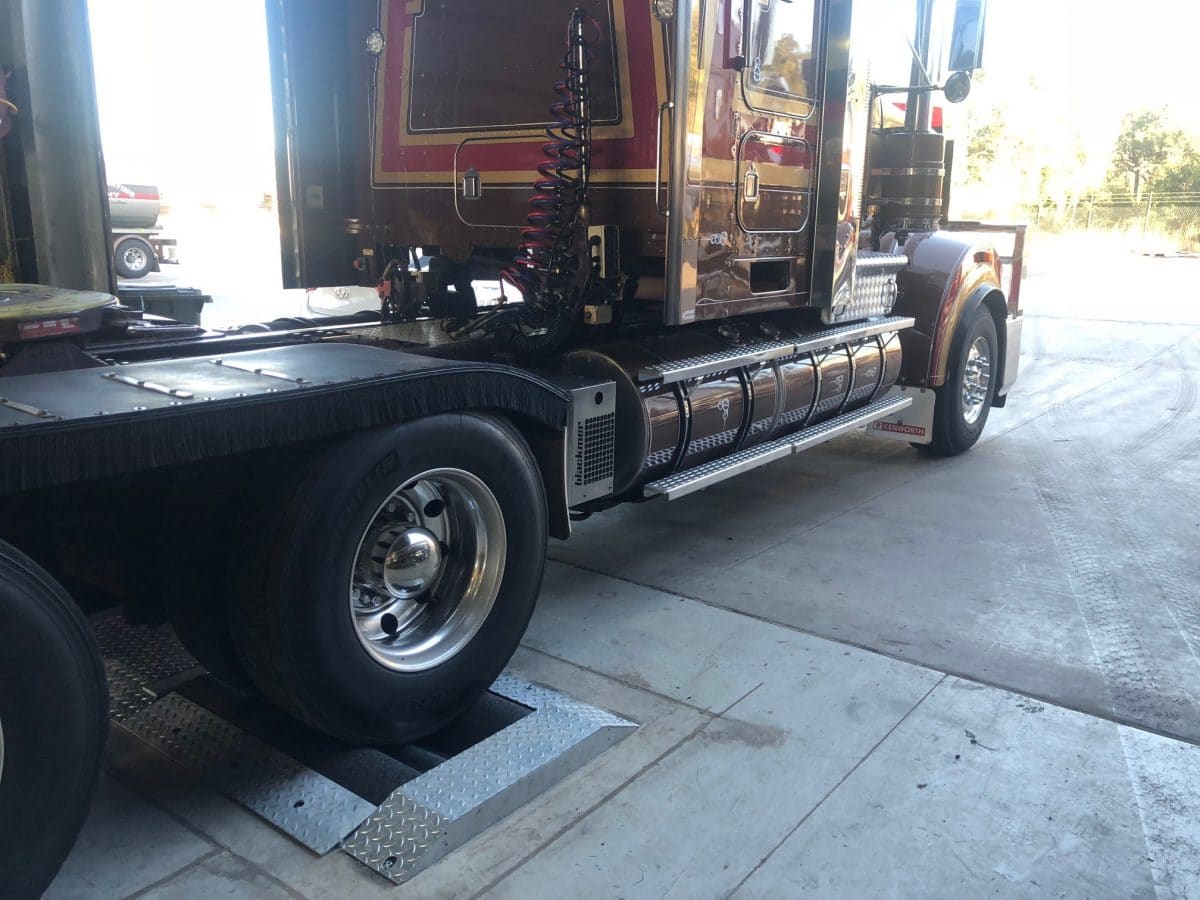Advice to help you future proof your heavy vehicle workshop
As we’ve talked about before, installing a roller brake tester in-house can massively improve your workshop’s productivity and increase the ROI you can expect from a service pit.
But while investing in an in-house brake tester might be a straightforward decision, there’s more to think about. You also need to consider exactly how you’ll install and set up the roller brake tester.
Simply put, you have two main installation options:
a) Across the pit
b) Before the pit
Currently, many Australian workshops install their roller brake tester before the pit; and this option definitely does the job. However, there is a chance of regulatory change to mandatory laden testing, which makes installing a brake tester across the pit a better option.
In this news post, the Levanta team show you why you should consider installing a roller brake tester across your service pit, to better future-proof your workshop.
Testing with an artificial load: the future for brake testing?
Currently the Australian National Heavy Vehicle Regulator (NHVR) only stipulates that vehicles should be tested unladen.
However, it’s already the case in other comparable countries (such as New Zealand) that vehicles must be tested partially loaded. In fact New Zealand leads the way with roller brake testing, mandating testing with a load of 60% of the rated capacity of the axle.
It may well be that our local authorities will follow suit with upgrading their requirements for partially loaded brake testing. And if that’s the case, it makes sense to set up your roller brake tester across the pit to meet this higher standard now, rather than having to uninstall and reinstall equipment down the track – with all the disruption and impact on your business that will entail.
Of course, while you could test a truck with an actual load in place, in reality this simply isn’t practical. That load needs to get where it’s going!
That’s why you should consider gearing up to use an artificial load system. Not only is it best practice, you’ll gain the extra advantage of being able to check that the vehicle’s ride height control is working correctly under loaded conditions as well.
What’s the best configuration for your roller brake tester?
It’s a good idea to install a roller brake tester across your service pit, about 2-3 metres in from the end. This allows room to strap down the chassis with a load simulator – so that if ‘artificial load’ regulations do come into force, your pit is already set up for it.
This configuration also allows you to move the vehicle forward to easily test multiple axles in a group one by one.
Note that this configuration does create some minor inconvenience compared to installing a roller brake tester before the pit. The rollers intrude into the pit, creating a narrow point where jacking beams can’t roll past. Even so, you’ll find your workshop’s overall efficiency is greatly increased.
Lastly, even if you don’t intend to run a chassis load simulator right now, it’s worthwhile ensuring you plan and fit the correct ducting for hydraulics piping, if you do need to upgrade your pit in future.
Here are some other resources on Brake Testers that you might find interesting:
Case study: Cleanaway Dandenong fitout including brake tester
Should you carry out static or dynamic roller brake testing?
Heavy vehicle brake testing criteria update
Installing play detectors (shaker plates) on your pit
To ensure your team can get a clear view of components (such as kingpins, tie rod ends, and other suspension parts), play detectors should be installed a couple of metres from the end of the service pit.
This allows technicians clearer visibility of these components – from multiple angles – from within the pit, compared with installing the shaker plates at the end of the pit.
With the correct installation, you can more easily carry out proper vehicle maintenance – leading to reduced operating costs and increased safety, either for your fleet or for your customers’ vehicles.
WH&S for your workshop pit and roller brake tester
Clearly, as a piece of equipment that must be set up very close to your service pit (essentially a large hole in the ground!), you need to establish clear safety procedures to ensure the safety of your workshop technicians when operating your roller brake tester.
Set up exclusion zones around the roller brake tester, along with appropriate barriers to entry. Ensure you carry out the correct training and induction for staff before they enter the pit area.
You should also note that, unlike play detectors which require a technician in the pit for normal usage, a roller brake tester cannot be operated while anyone is in the pit.
Talk to Levanta for advice on installing your roller brake tester
For advice on the best solution for your business, talk to the expert team at Levanta. The equipment we supply is capable of producing reports that comply with the NHVR’s requirements – as well as addressing many potential future changes.
To find out more about brake testers and how they can work with your vehicle workshop, get in touch with Levanta on 1300 577 541 or with your local office’s contact forms here.




